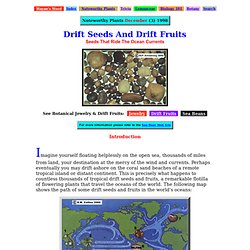

Parashar. How to grow orchids at home. The Phalaenopsis orchid is among the world's best-selling indoor flowering house plants because the exotic blooms can last for as long as three months, and the plants are often priced at less than $20 in groceries and box stores.

(Photo: Alex/Flickr) You went to the grocery to get a quart of milk and came home with an orchid. How did that happen? An even more pressing question might be, "What do I do with it? " Don’t panic. Watering This is the most critical step. Light Your orchid is probably a Phalaenopsis, the most popular orchid in displays at groceries and box stores. Temperatures Like you, your orchid will be most comfortable if the temperature is between 60 degrees F and 80 degrees F. Fertilizer Use a fertilizer made for orchids. Repotting This is the biggie. Reflowering Because your plant is probably a Phalaenopsis, a decrease in day length and night temperatures usually helps it to begin the flowering process. Internet Bonsai Club - Portal. Oldest Known Flowering Plants Identified By Genes.
Oldest Known Flowering Plants Identified By Genes By William J.

Cromie Gazette Staff It’s a nondescript shrub with small, unimpressive flowers, and it’s found in only one place in the world – New Caledonia, a minor tropical island in a remote corner of the southwest Pacific. But it has suddenly catapulted to botanical eminence as a key piece in the puzzle of the origins of flowering plants. Called Amborella, the plant is the one remaining species of a lineage that first appeared on Earth more than 140 million years ago, while dinosaurs still ruled the planet. Mathews and Donoghue’s analysis revealed that another early branch includes Austrobaileya, a group represented by one species found only in Australia, and by the more common star anise, which boasts bright red, saucer-shaped flowers. Tracing flowering plants back so close to their roots ranks as one of the major botanical discoveries of this century. Copyright 1999 President and Fellows of Harvard College.
Jonathan Drori: Why we're storing billions of seeds. Royal Botanic Gardens, Kew - Welcome To Our Website. 10 useful plants you can find in the wild: Nature for your every need. The City Of The Future Will Be Covered In Lichen. Database Summary Paper Alpha List. Understanding Evolution.
The bacteria that changed the world - May, 2017 The make-up of Earth's atmosphere, once the domain of Earth science textbooks, has become an increasingly "hot" news topic in recent decades, as we struggle to curb global warming by limiting the carbon dioxide that human activity produces.

While the changes that humanity has wrought on the planet are dramatic, this isn’t the first time that one species has changed Earth’s atmosphere. Three billion years ago, there was no free oxygen in the atmosphere at all. Life was anaerobic, meaning that it did not need oxygen to live and grow. That all changed due to the evolution of Cyanobacteria, a group of single-celled, blue-green bacteria. Plant Biology - CliffsNotes. 15 House Plants You Can Use As Air Purifiers.
Posted by admin on Thursday, February 18, 2010 · 68 Comments Here are 15 plants that could clean your air for just the price of a few drops of water each day.

First lets check some of the evidence behind the claim that plants can purify your household air: 1. NASA Research A NASA research document came to the conclusion that “house plants can purify and rejuvenate air within our houses and workplaces, safeguarding us all from any side effects connected with prevalent toxins such as formaldehyde, ammonia and also benzene.” The Plant Encyclopedia - Main Page.
Home. Internet Directory for Botany. International Carnivorous Plant Society. Drift Seeds and Drift Fruits. Imagine yourself floating helplessly on the open sea, thousands of miles from land, your destination at the mercy of the wind and currents.

Perhaps eventually you may drift ashore on the coral sand beaches of a remote tropical island or distant continent. This is precisely what happens to countless thousands of tropical drift seeds and fruits, a remarkable flotilla of flowering plants that travel the oceans of the world. The following map shows the path of some drift seeds and fruits in the world's oceans: Seeds provide the vital genetic link and primary dispersal agent between successive generations of plants. They are produced and packaged in botanical structures called fruits, and come in an endless variety of shapes and sizes. The tropical islands of Indonesia, Polynesia and the Caribbean probably have the greatest variety of drift seeds. Charles Darwin & Ocean Dispersal Of Seeds During his famous voyage around the world on the H.M.S.